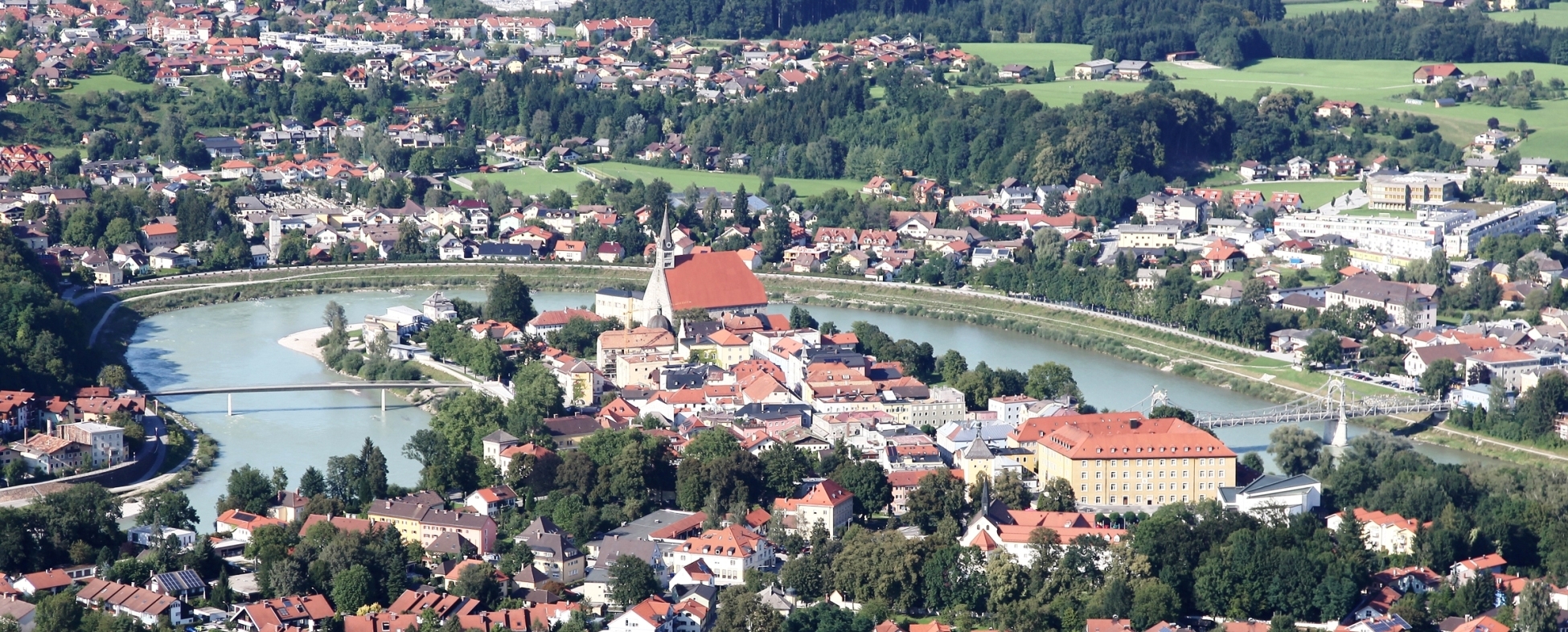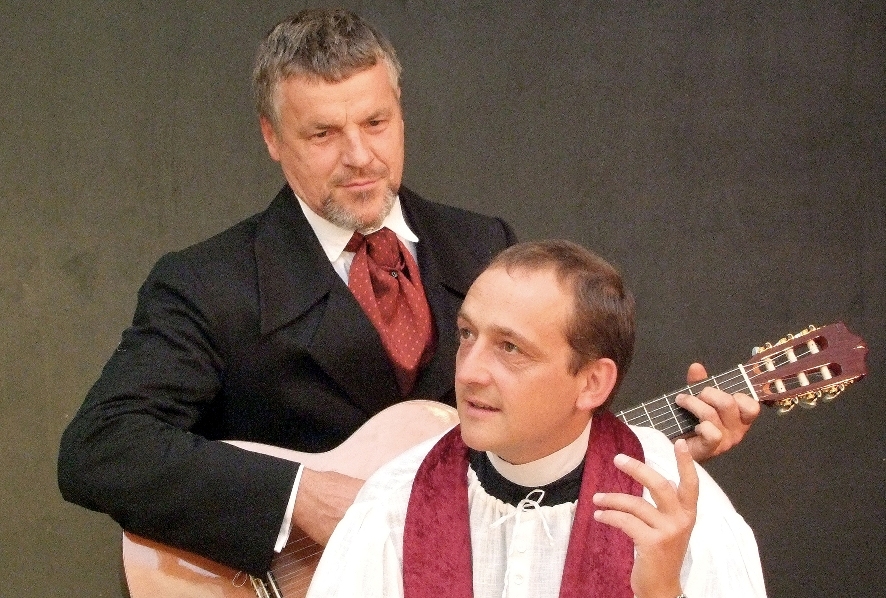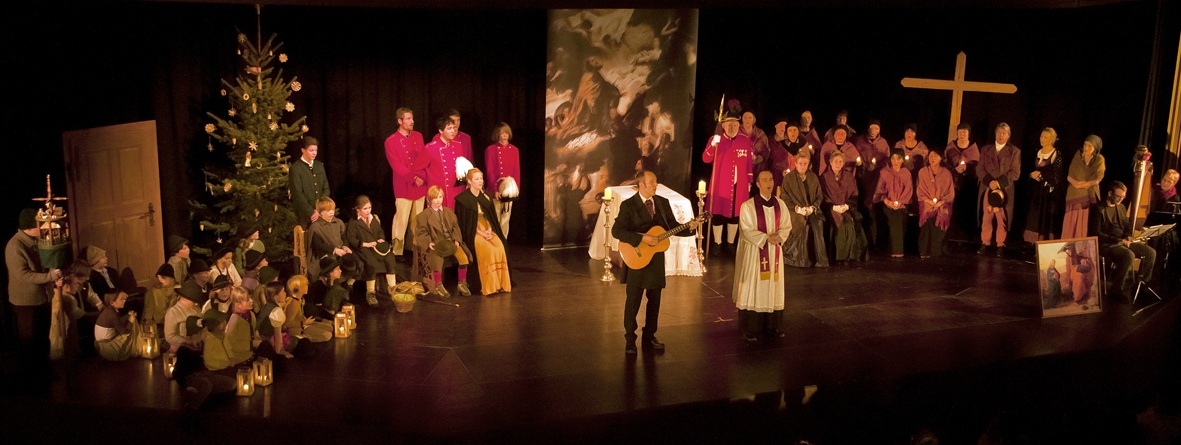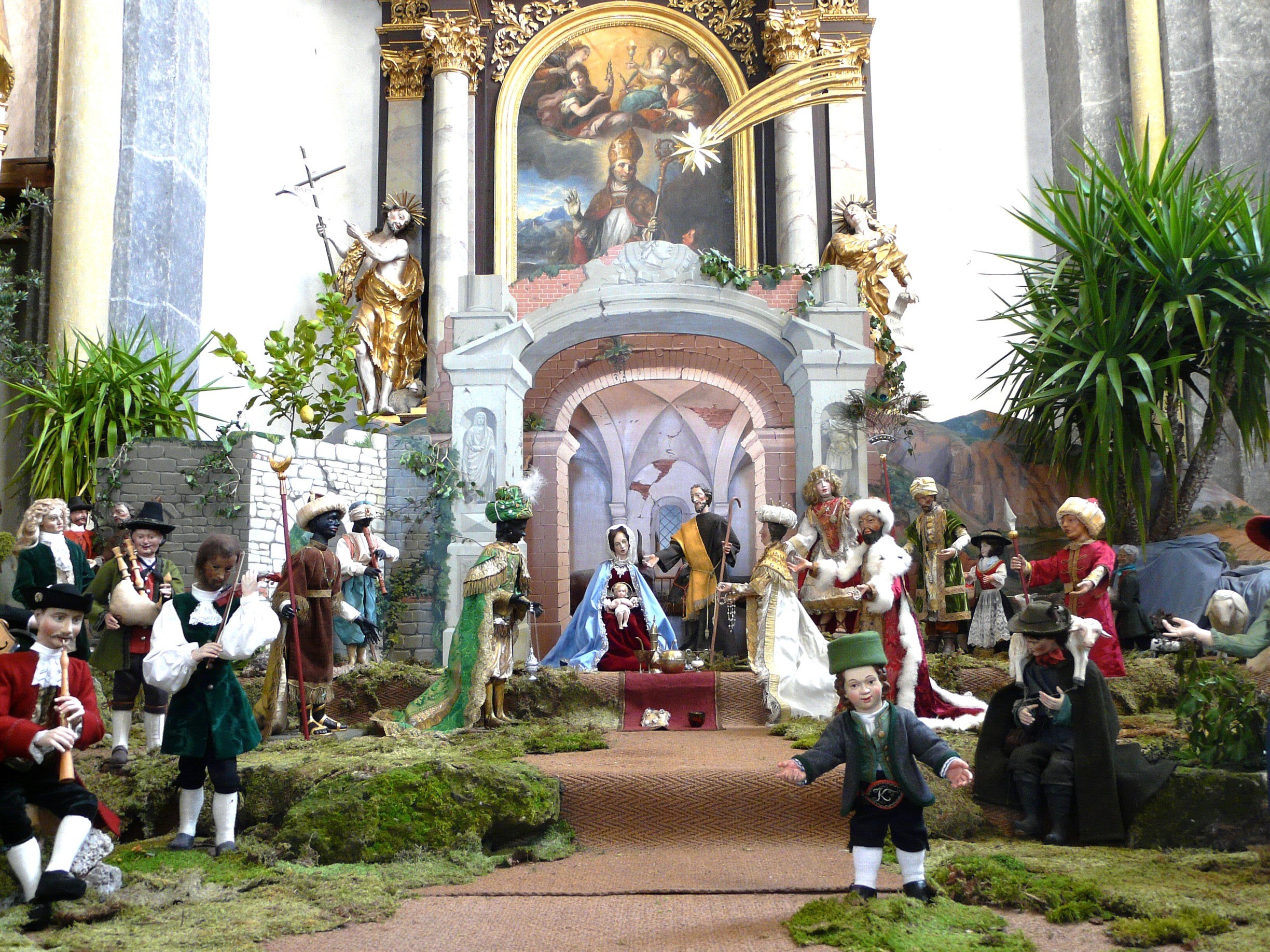Laufen was associated with Oberndorf for more than1000 years. 1816, just two years before “Silent Night! Holy Night! ” rang out for the first time in Oberndorf, the Salzach became the border river between Laufen and Oberndorf.
Museums, memorials, events
Silent Night History Play
The Silent Night History Play takes place annually in the Salzachhalle in Laufen under the direction of Josef A. Standl, Vice President of the Silent Night Society. The staged performance shows the genesis of “Silent Night! Holy Night! ” and the development of the song by Franz Xaver Gruber and Joseph Mohr.
Local Community
The place name "Laufen" can be traced back to the Old High German "loufa", which means rapids. The city is first mentioned in documents in 784 and people settled in the area in prehistoric and Roman times.
Emperor Ludwig of Bavaria ordered that the salt from Hallein could only be transported on the Salzach. A rock, the so-called Nocken that acts as a rather dangerous rapid, hindered navigation, this is where the name castellum ad louffi (fort on the rapids) comes from. Laufen benefited from the income from overnight stays, customs duties and shipbuilding.
Until 1816, the history of Laufen and Oberndorf is best viewed together, Laufen and Oberndorf were one place for more than 1000 years. In 1816 Laufen was separated from Salzburg together with the Rupertiwinkel and Bavaria was added. The areas on the left of the Salzach, including Laufen, remained with Bavaria, the areas on the right with Oberndorf went to Austria.
The Salzach became a border river. The basis for this was the Treaty of Munich, in which Bavaria renounced Salzburg. The choice of the border was dictated by the military and took no account of the common economic and cultural area that had grown over time.
Today the Salzach Bridge from 1903 connects Laufen and Oberndorf with its impressive Art Nouveau iron construction. The collegiate church in Laufen is the oldest Gothic hall church in southern Germany and the medieval old town is almost completely preserved. The Salzachhalle is a cultural center that radiates across the region.



